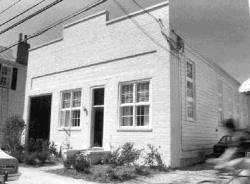Disillusioned by his bitter rivalry with Thomas Edison over the invention of the incandescent lightbulb, 41-year-old Maine-born inventor Hiram Stevens Maxim sailed for England in 1881, never to return to the United States. Aware that his career in electrical engineering had ended, Maxim became consumed with creating an automatic gun, inspired by the casual remark of an American friend, who said, “Hang your chemistry and electricity! If you want to make a pile of money, invent something that will enable these Europeans to cut each other’s throats with greater facility.”
Maxim, Hiram
In the spring of 1887, the emperor himself came out to the Steinfeld firing range a few kilometers from Vienna to watch the Austrian Army trials for rapid-firing weapons. Franz Joseph seemed particularly impressed by the performance of the Nordenfeldt model, a gleaming five-barreled rifle demonstrated by a team of two—one man feeding the cartridges, the second carefully cranking out 180 shots per minute. The day’s last entrant was a huge, bearded American—the inventor, salesman, and demonstrator of a small British firm’s only product: a squat, rather ugly gun.

The United States Electric Illuminating Company of Charleston started up South Carolina's first central station for incandescent lighting in October 1882 -- only one month after Thomas Edison opened his famous Pearl Street plant in New York City. In the following years, the company's parent firm was a major force in the growing electrical industry.

The United States Electric Illuminating Company of Charleston started up South Carolina's first central station for incandescent lighting in October 1882 -- only one month after Thomas Edison opened his famous Pearl Street plant in New York City. In the following years, the company's parent firm…
Read More

